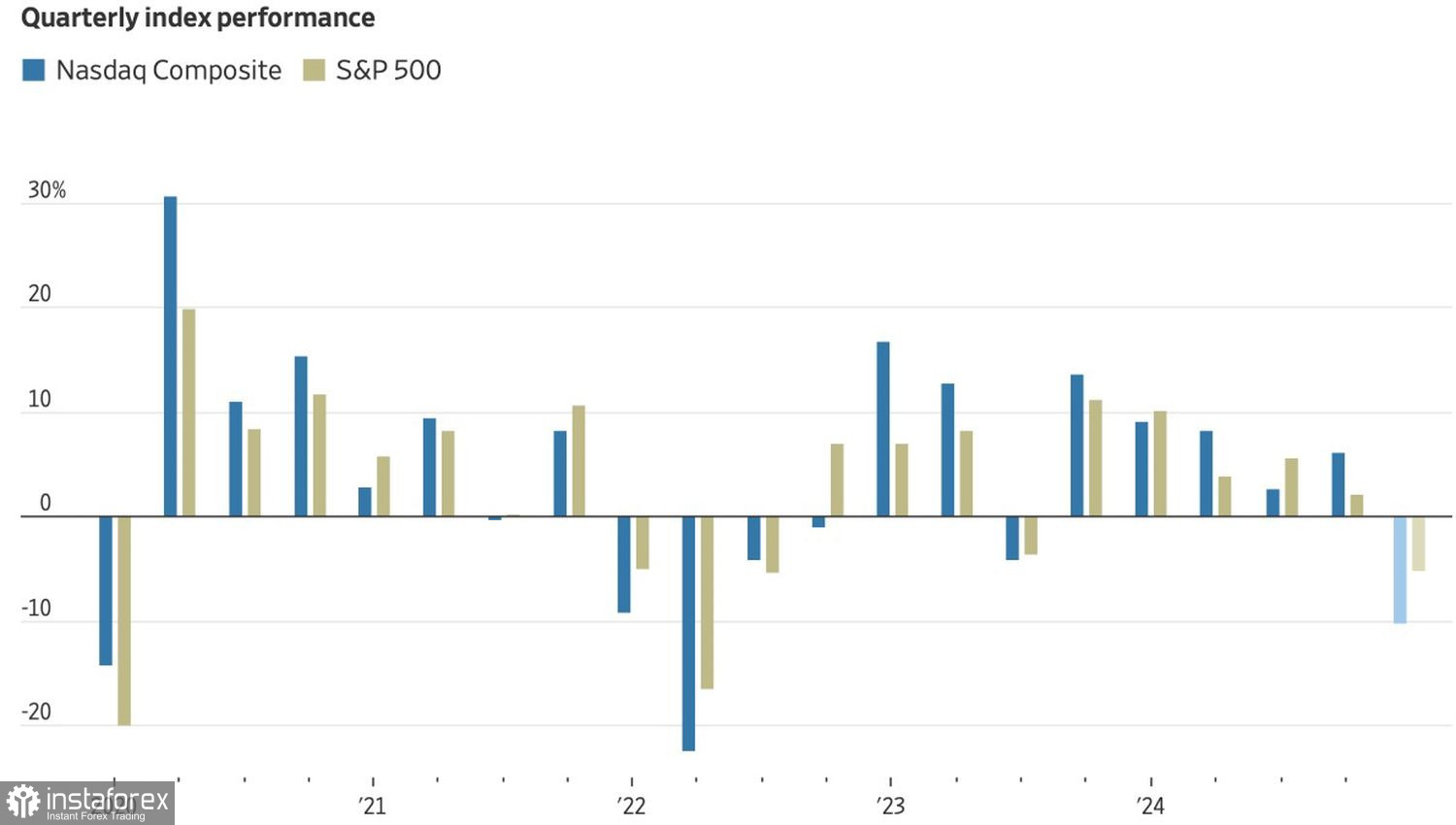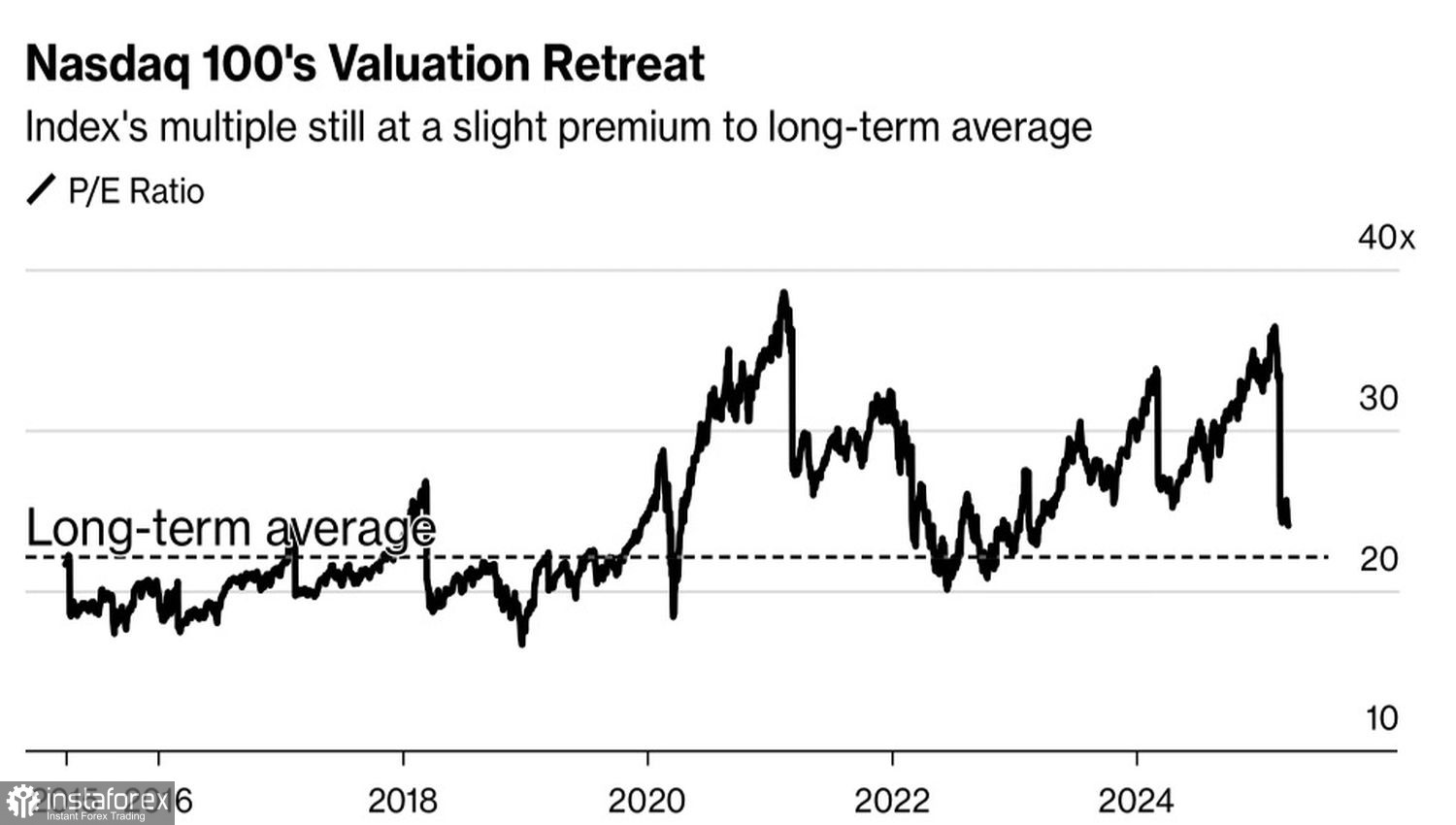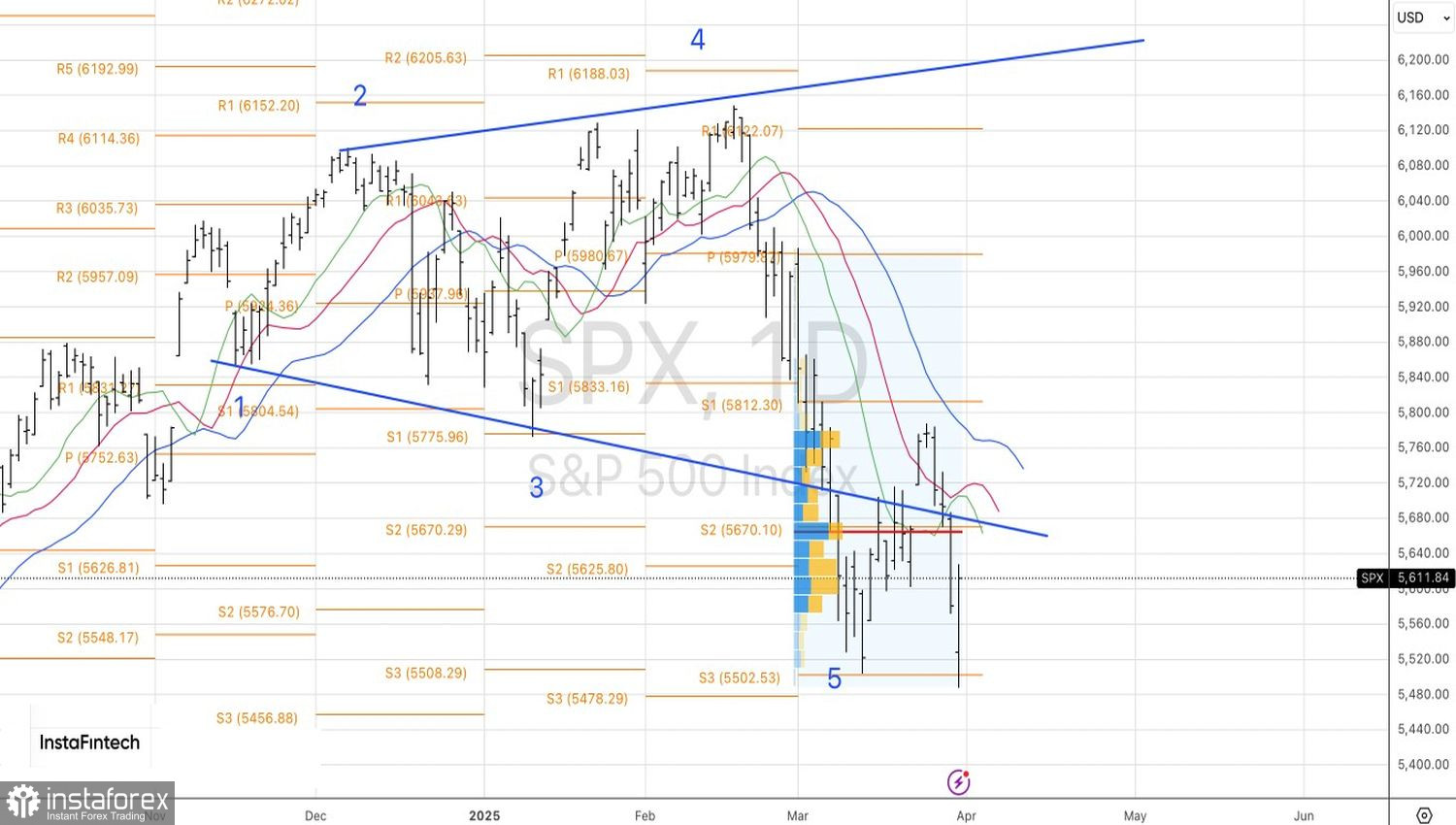The S&P 500 had its worst quarter in three years. Investors are shifting capital from North America to Europe. Once-booming US tech stocks have collapsed. Major banks and respected institutions are raising the odds of a recession for the American economy. That's a lot of bad news for a broad stock index, isn't it? However, buying the dip towards the lower boundary of the sideways range at 5,500–5,790 has borne fruit — just in time for America's "Liberation Day".
Performance of US stock indices

Donald Trump's policies have caused turmoil not only in financial markets but also among the general public. According to the latest Associated Press poll, nearly 60% of Americans disapprove of the president's protectionist stance, and 58% are dissatisfied with his overall handling of the US economy. The market sell-off reflects investor skepticism, but the Republican leader remains undeterred. He insists the country must endure short-term pain to reclaim a golden era for America.
That "Liberation Day" will come on April 2, when the White House is set to announce new tariffs. According to Wall Street Journal sources, the president is weighing two options: blanket 20% import tariffs or tailored, reciprocal tariffs. The former could send another shock through financial markets, while the latter might calm nerves.
Following JP Morgan and Moody's Analytics, Goldman Sachs has raised the probability of a US recession from 20% to 35%. Yet investors have found new reasons for optimism. After a massive sell-off in tech stocks, forward P/E ratios are now approaching historical averages. In other words, stocks are no longer overvalued, making them more attractive.
US tech sector P/E trends

The White House's new tariffs could also slow capital outflows from North America to Europe. A full-blown trade war would likely hit the EU harder due to its large trade surplus with the United States. Moreover, part of the capital shift was driven by a 4.6% gain in the euro against the dollar in the first quarter. As a result, European investors lost about 13% on US-listed assets.

According to Wells Fargo, the dollar's January-March slide was temporary. Looking ahead, tariffs and trade tensions could boost the greenback by 1.5% to 11%, with maximum gains expected if America's trade partners avoid a full-scale retaliatory response.
From a technical standpoint, the S&P 500 has bounced off the lower boundary of the previously established 5,500-5,790 consolidation range. Long positions opened at the 5,500 level appear to be worth holding. A break above the resistance levels at 5,625 (pivot) and 5,670 (fair value) would allow for additional long positions.





















